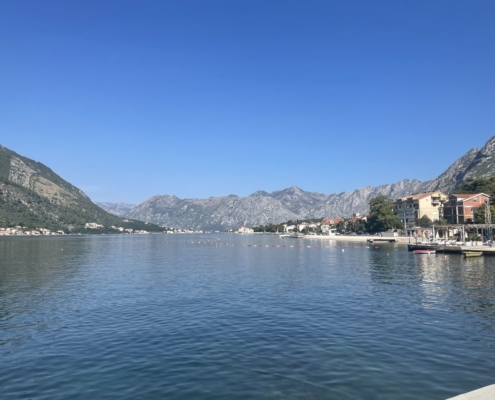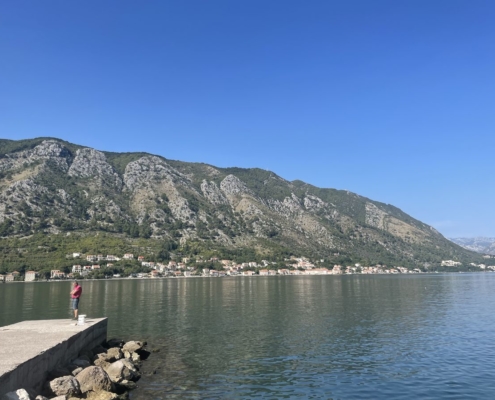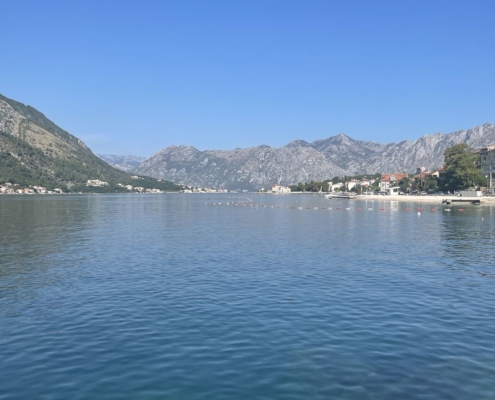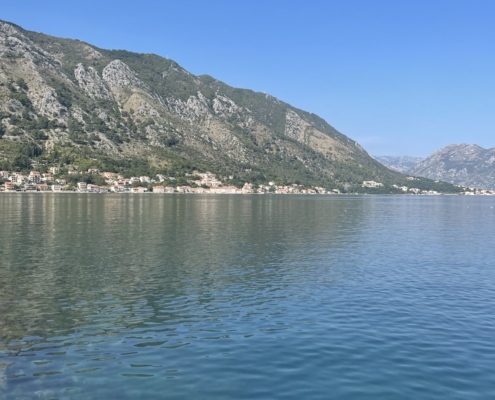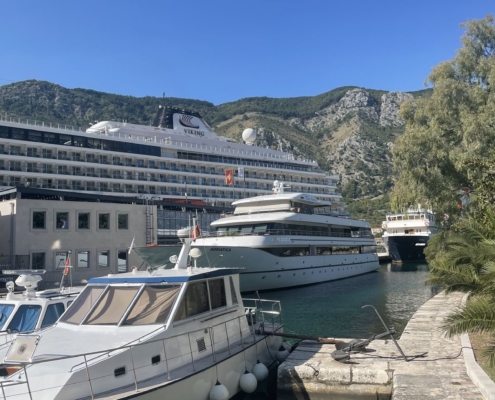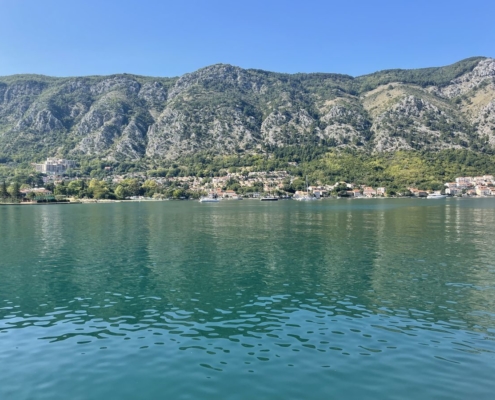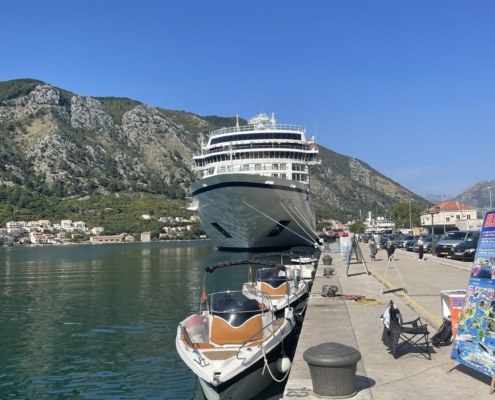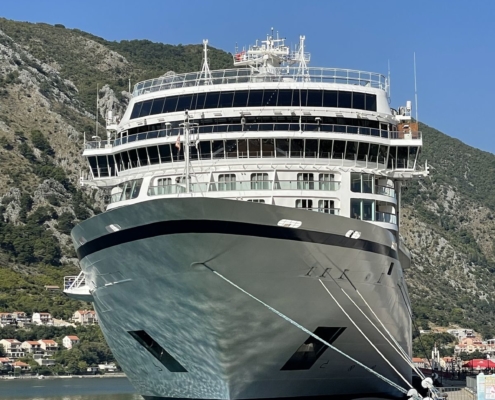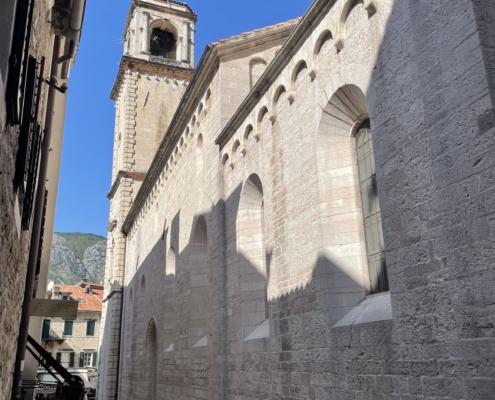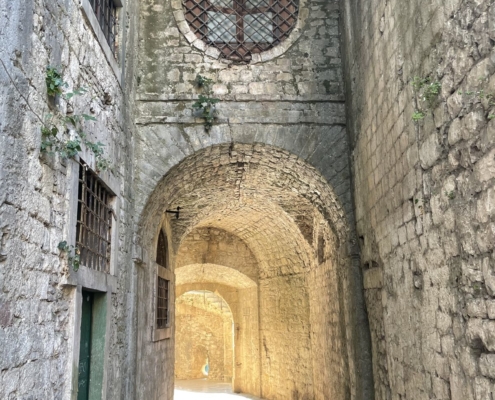The port and trading town of Kotor is a walled seaport city at the southern end of the Bay of Kotor, situated in one of the four bays of the Bay of Kotor. It lies about 50 kilometers west of Nikic, at the foot of the steep Lovcen massif, which rises to 1,749 meters.
Kotor was founded by the ancient Romans under the name of “Acruvium”. In the 10th century it was an autonomous city ruled by Byzantium. From 1186 to 1371, Kotor was a free city of medieval Serbia before briefly becoming Venetian and Hungarian. From 1395 to 1420 Kotor was an independent republic and was Venetian again until 1797. The city regularly suffered damage from Turkish attacks and earthquakes. Between 1807 and 1814 Kotor was occupied by France. The French period was followed by Austrian rule until 1918 when Slavic sailors of the Austro-Hungarian Navy mutinied in Kotor and it was absorbed into the Kingdom of Serbs, Croats and Slovenes. From 1929 to 2003 Kotor was part of Yugoslavia. Since 2006 the town has belonged to the independent state of Montenegro.
In the Middle Ages, this natural harbor on the Adriatic coast was an important center of art and commerce, with its own famous schools of masonry and iconography. Many of the monuments, including four Romanesque churches and the city walls, were severely damaged by the 1979 earthquake. They were largely reconstructed using original components and in the same year Kotor was declared a UNESCO World Heritage Site.
No wonder the Bay of Kotor (“Boka Kotorska’ or simply “Boka”) is a popular destination for all cruise ships (much to the chagrin of the locals).
Much has changed in two thousand years, but the view from the city’s walls and fortresses is certainly as magnificent today as it was then. With a fascinating mix of numerous architectural styles from all over Europe, spacious squares and narrow streets, the medieval old town of Kotor invites you to explore. Much of Kotor’s medieval fortresses have been preserved. The city walls stretch for 4.5 km and are about 2 to 15 meters thick and reach a maximum height of 20 meters. The main gate dates from the 16th century.
The southern gate, the oldest of Kotor, was partly built in the 9th century. The clock tower is one of the symbols of Kotor. It occupies a central place opposite the main gate. It was built in 1602 but was unfinished at the time of the 1667 earthquake and then leaned significantly to the west. Later there have been some attempts to restore it to an upright position, but after the disastrous 1979 earthquake the clock tower returned to the same position.
The old town of Kotor is completely car-free and there is hardly a modern building reminiscent of the 21st century. You can find small businesses, service providers and schools everywhere, so you realize that Kotor also exists outside of tourism.
Nowadays in Kotor there are many activities like boat trips, snorkeling, diving, hiking and cycling. Kotor is also known for its top quality restaurants serving fresh fish and other local specialities.
Kotor is a beautiful and fascinating city not to be missed and more than lives up to its name “perl”.
This post is also available in: German

